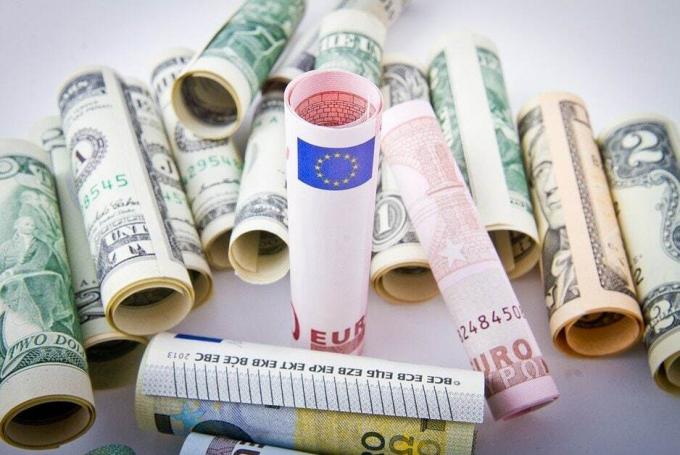Technological advances and diversification have changed the offer concept, it can be said that it has constantly evolved over time. For example, during the Middle Ages it was unique and with a fixed price, currently there are markets with strong price differences depending on the brand, quality, quantity, place of sale, even depending on the public destiny.
In economy the concept of supply It is not usually studied in isolation, it can be said this phenomenon goes hand in hand with the demand, and it is both that determine the rules of the game in the market.
Advertisements
Whatever the economic system; free market or planned economy, supply and demand They interact and according to this interaction, the assessment and quantification of the products and / or services is determined according to the needs of the demander, that is to say that the supply and its interaction with the demand influence the price of the products and the quantities in the market.

Advertisements
In this article you will find:
What is the offer?
The offer in economics It is the set of goods and / or services that are ready to be sold in the market, at a specific time and at specific prices. In other words, it can be said that the offer is given by the products and services available to the consumer.
The quantity supplied by producers will depend on a series of internal and external elements (the price of the raw material, inputs, labor, machinery, technology, and others involved in production, price of competition and sales expectations), which in the end cause variations in the quantity supplied.
Advertisements
Within the system market economy it is established that the quantity supplied and the price are determined by the balance between demand and supply, in other types of non-competitive markets or with market failures, it is common for other additional constituents to intervene.

Advertisements
Law of supply
It is an economic law by which it is determined that the quantity supplied of a certain product or service increases as its price increases, while the remaining variables remain constant.
That is, the law of supply determine the amount offered of a good depending on its price, noting that the higher the price of a good, the greater the supply, since producers feel motivated to place their products on the market.
Advertisements
Factors that determine the offer
The price:
If the price increases, the quantity supplied will increase and vice versa.
Production costs:
If production costs increase, supply tends to decrease and vice versa. When talking about the cost of production resources, it refers to all the expenses involved in the productive process, salaries, price of materials and supplies, interest rates, rents, etc.
The technology:
If improvements are made in the technology of the production process, the supply will increase.
Expectations:
If there is an expectation of an increase to short term the price of the good, the supply will increase, and vice versa.
Number of producers:
If there are a greater number of supplying producers, the offer will increase and vice versa.
Taxes and subsidies:
If higher taxes are introduced, the supply is reduced, and if subsidies are applied to the production of a good, the supply increases.
Supply curve
The supply curve It is the graphic representation that shows the interaction between prices and the quantity supplied of a good in the market.
This curve shows the quantities of a given product that a salesperson is willing to sell. trade at certain alternative prices, in case the rest of the determining factors remain constant.
In this sense, the variation or increase in P (price), causes a variation or increase in the Q (quantity supplied)The same happens if the variation that occurs is a decrease, the price decreases causing a reduction in the quantities offered.
The supply curve It has a positive slope, that is, in most cases the curve is increasing, caused by the direct relationship between prices and the quantities supplied.
Elasticity
It is designated as elasticity of the supply curve, the percentage variation experienced by the quantity supplied of a given good, when its price varies only 1%, keeping constant the other factors that could affect the quantity offered.
Supply curve movements
The movements in the supply curve They are caused by the different changes in the prices of the good offered.
When the prices of the goods offered are high, the quantities supplied by the producers are high; if the prices vary, the quantities supplied vary in the same direction as the prices.
Shifts in the supply curve
The shifts in the supply curve They are caused by changes in the other factors that determine the offer, with the exception of the price of the product. That is, the supply varies as a consequence of changes in production costs, increases in taxes, competition, change in the price of similar products, change in the number of vendors, etc.
Demand and supply in economics
In the market economy, two components coexist supply and demand, thanks to this said economy remains in equilibrium.
This is possible thanks to the fact that there is a producer of a useful or desired good or service for another individual (the consumer) who at the same time offers something that serves the producer, there being an exchange equal.
Law of supply and demand
The law of supply and demand constitutes the basic principle on which a market economy is based, reflects the existing direct relationship between supply and demand of a product, considering as a determining factor the price at which said product is sold product.
In this way, according to the price of a good existing in the market, the supplying producers will be willing to manufacture certain number of that good, for their part the plaintiffs will be willing to buy a certain number of the same good, depending on their price.
According to this principle, the different types of market arise, where the relationship between the two is reflected. Considering, for example, the free competition market, as the type of market where negotiations take place between the two parties (suppliers and demanders). There are other types of market such as monopoly, oligopoly, where the conditions are not fair.
The breakeven it is achieved when the applicants are willing to purchase the same number of units that the bidders consider manufacturing at the same price.
Excess supply
When the price at which the products are offered is higher than the equilibrium price, demand falls and there is what is known as excess supply, in In this sense, the quantity supplied is above the quantity demanded, therefore, suppliers must lower prices so that sales increase.
Product shortage
The opposite case to the previous one, when the price of a good is below the equilibrium price, the quantity demanded increases and there is what is known as a shortage, for Consequently, the bidders must increase the price, since there are many buyers and few units of product, this should make the number of buyers decrease and establish the Balance.
Offer types
Depending on the types of market you can find different types of offer, for example:
- Competitive offer: It is one that exists in free competition markets, in which producers are in circumstances of certain competitive freedom due to the diversity of producers of the same good, where the differentiation will be determined by quality, price and attention, without a particular producer dominating the market.
- Oligopolistic offer: The market is dominated by a few producers and it is they who determine the supply, the price and usually monopolize the amount of inputs for their production.
- Monopoly offer: The market is dominated by a single producer and it is this who imposes the price, quality and quantity.
A monopoly producer is not necessarily the only producer, but if he dominates more than 90% of the market.
Finally, it is worth mentioning that these characteristics of the market, thesupply and demand tend to vary in situations of economic crisis, where both are influenced by the purchasing power of the population, the scarcity of inputs and high import rates.


